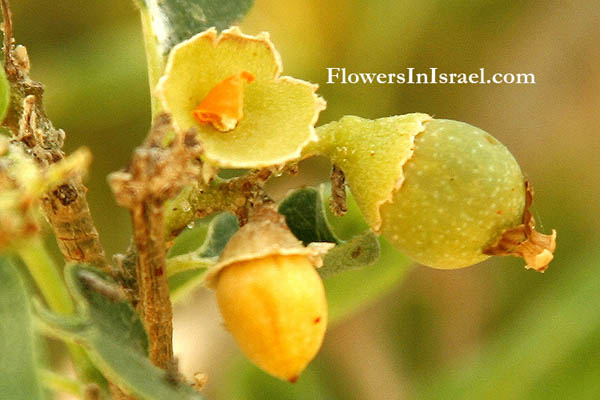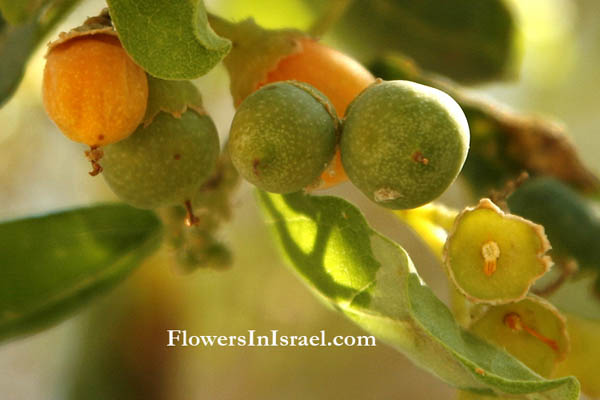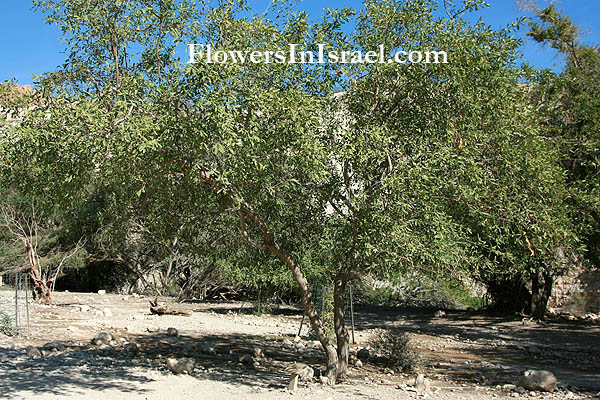Hebrew: גפנן המדבר, Arabic: السبستان الصيني
| Scientific name: | Cordia sinensis Lam. | |
| Synonym name: | Cordia gharaf (Forssk.) Ascherson | |
| Common name: | Grey leaved saucerberry | |
| Hebrew name: | גפנן המדבר | |
| Arabic name: | السبستان الصيني | |
| Plant Family: | Boraginaceae, זיפניים |

|
| Life form: | Phanerophyte, tree | |
| Stems: | Multi-stemmed tree 3-12 m high and often with slender branches tending to droop; bark, brown-pale creamy-brown, finely fissured longitudinally, or smooth, dark grey on branches | |
| Leaves: | Opposite, (sub)opposite or alternate, ovate to obovate or broadly, 2-12 x 1-4.5 cm, glabrous or slightly pubescent and often somewhat sandpapery; petiole about 10 mm longwith long pale hairs | |
| Flowers: | White, in terminal cymes | |
| Fruits / pods: | Fruits, conical, bright red or orange when ripe, 7-20 mm long, with conspicuous long tip; hang in clusters; seed 1-4, hard, rough, yellowish cream | |
| Flowering Period: | May, June, July, August, September, October | |
| Habitat: | Thermophilous plants | |
| Distribution: | Semi-steppe shrublands, Deserts and extreme deserts | |
| Chorotype: | Sudanian | |
| Summer shedding: | Perennating |

Derivation of the botanical name: Cordia, for the German botanist and pharmacist Valerius Cordus (1514/1515 - 1544). sinensis, refers to its Chinese origin. gharaf, Arabic, غرف gharafa to draw or lift water, غرّاف gharaf, having much water; carafe.



|